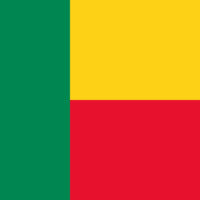Contribution à l'Etude de l'Histoire de l'Ancien Royaume de Porto-Novo. A. Akindélé and C. Aguessy. No. 25, Mémories de l'Institut Français d'Afrique Noire. IFAN-Dakar, 1953. 171 PP., maps and illustrations
Contenu
- Classe de ressource
- book review
-
Titre
-
Contribution à l'Etude de l'Histoire de l'Ancien Royaume de Porto-Novo. A. Akindélé and C. Aguessy. No. 25, Mémories de l'Institut Français d'Afrique Noire. IFAN-Dakar, 1953. 171 PP., maps and illustrations
-
liste des auteurs
-
Wolfson, Freda
-
Journal
-
African Affairs
-
volume
-
53
-
numéro
-
211
-
première page
-
169
-
dernière page
-
170
-
Date
-
1954
-
Couverture spatiale
-
 Bénin
Bénin
-
extracted text
-
RECENT BOOKS
169
Contribution a VEtude de I'Histoire dt V Ancien Royoume de Porto-Novq. A. AkisdiM
de l'lnstitut Fran9ais D'Airique Noire. IFAN-Dakar, 1953. 276 pp., maps and illus.
These three additions to the IFAN series vary in character and interest
The first presents the traditional history of the Kingdom of Porto-Novo, part of the
modern Dahomey, as recorded by an African first published in the Yoruba language
in 1914 and now translated into French and edited by two African scholars, one of whom,
M. Akindel6, is the son of the author. Like all African kingdoms, Porto-Novo has mythical origins. Even after the seventeenth century, when the chronology becomes mar*
definite, there is a distinctly mythical flavour to the incidents handed down orally from
one generation to the next. It may well be that history is a record of what people
think has happened rather than what actually has happened. Certainly the faithfulness
with which Africans treasure their oral traditions calls for the acceptance of this notion.
Indeed, in the absence of any other sources, this kind of evidence cannot be seriously
challenged.
The editors have included details of the political and social structure of the people of
Porto-Novo, as well as their customs and beliefs. Not much of the material in this
volume is new. Porto-Novo is very closely bound up in history and customs
with Dahomey, which was so carefully studied by Professor Herskovits a few years ago.
The value of this volume, therefore, Iie3 not in its originality, but in the fact that it is
an all-African product. Works like these are to be welcomed and encouraged since
their own past is of the greatest interest and importance to Africans themselves, and
African scholars are so much better able to collect oral evidence than Europeans.
In the first part of Un Pmple dt VOuest Soudanais M. Boyer has delved into the
history of one of the most neglected groups of inhabitants of the western Sudan—the
Diawara. From mythical beginnings, the Diawara gradually expanded until they reached
the height of their power in the late sixteenth century. At that time they ruled over
an extensive empire, stretching from Senegal in the west to the northern limits, of the
present Gold Coast They were unable to maintain their authority. By the time Mango
Park arrived in their territory, the Diawara had already fallen into confusion and made
easy prey for the Moslem conqueror El Hadj Omar. There was little left of the original
empire by the time of the French advent in 1890. Now the Diawara live in small and
scattered communities and do not play an important part in the affairs of the territory.
But they are jealous of their traditions and customs and cling tenaciously to these relics.
The second and more substantial part of his work M. Boyer devotes to a description
of the country and the people, giving an account of the social, religious, political and
economic life of the Diawara. The author sets out to capture the spirit and personality
of the people he is studying by recording their history, habits and beliefs and he achieves
his purpose admirably.
�170
AFRICAN AFFAIRS
The third work, the Contribution k V Histoir* det Songhay. is a purely historical study
and is a thoughtful and scholarly product. The fact that the Songhay empire was so
closely in touch with the Arab world almost throughout its history means that there is a
great deal of written material to go upon. The first work in Arabic dates from the ninth
century. By careful comparison of written sources with oral tradition, the author has
been able to compile a comprehensive account of the history of this important Negro
empire and to correct several misconceptions which appeared in the work of M. Delafosse,
the first historian to attempt a synthesis of the Sudanese kingdoms.
The Songhay traced their origins back to a community of farmers and fishermen
living on the banks of the Niger before the seventh century. Throughout their history
they -were buffeted and stimulated by invaders from the north. The first to make their
appearance were the Berbers, white Christians, who migrated south about 700 A.D. In
the eleventh century, the Moors swept down, bringing Islam with them. The fifteenth
century saw the real foundation of the Songhay empire under the ruler Sonni Ali, who
according to tradition was endowed with magic powers which enabled him to subdue
all his neighbours, including the two great centres of Timbuktu and Jenne, until he held
sway over the whole of the Upper Niger. The key to political and economic power was
the river. It made for easy communication between one part of the empire and was the
vital factor making for cohesion. But it could not protect the Songhay from northern
invaders. In the seventeenth century the Songhay empire was cut in two by Moors
and from that time onwards, it declined. The Tnaregs followed the Moors, and the
Europeans at the end of the nineteenth century finally subdued the remnants of a
proud and formidable empire. M. Rouch modestly calls his study a " contribution "
to the history of Son«;hay. It is an extremely valuable account, clearly set out and well
annotated and it makes a significant contribution to the body of historical knowledge
of the Sudanese kingdoms.
Each of these works is well-illustrated with photographs, drawings and maps, and
each has a bibliography as well as useful chronological tables, like previous IFAN
publications, they make notable additions to West African history and maintain the
high standard that has come to be expected of the series.
FREDA WOLFSON.
�
 Bénin
Bénin

